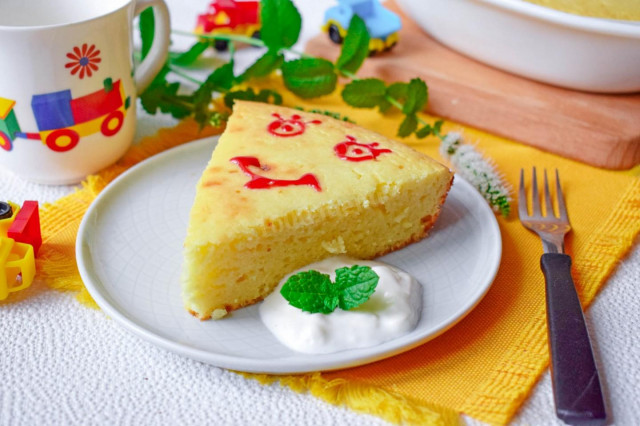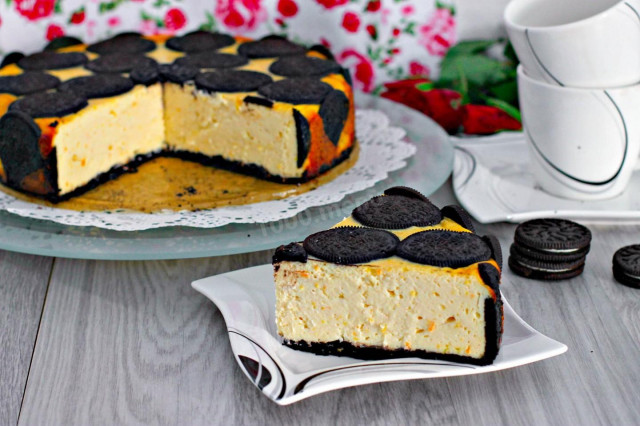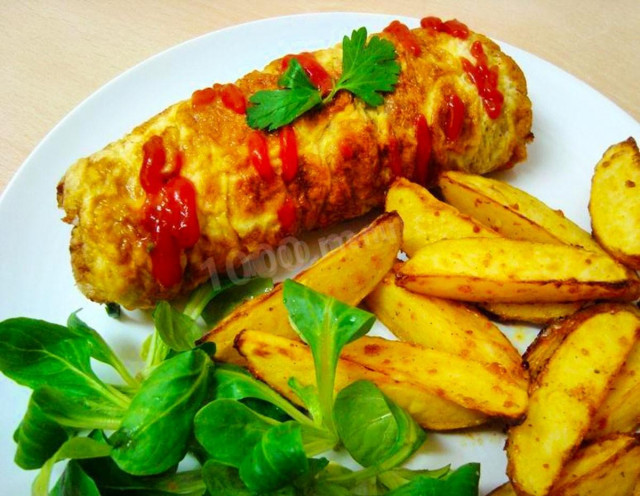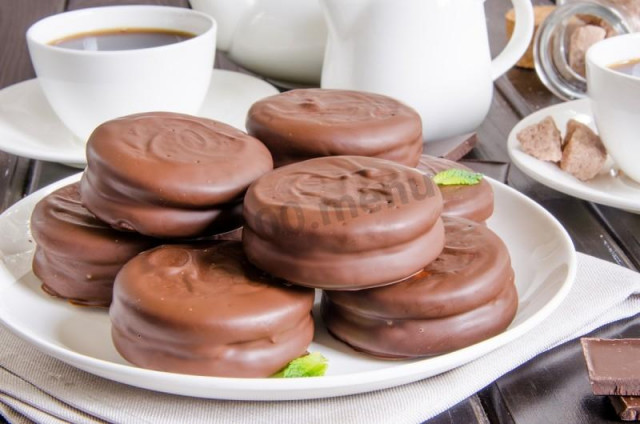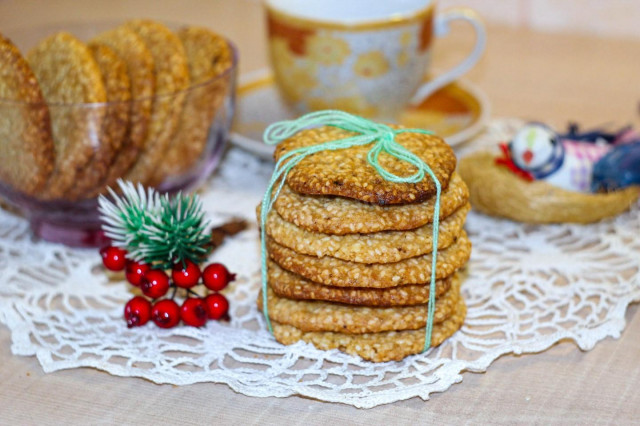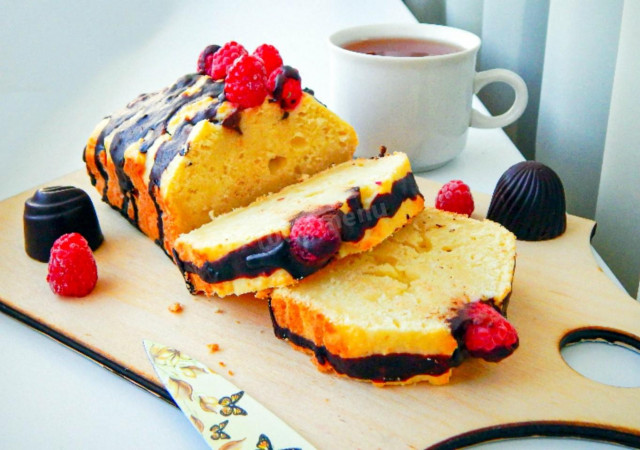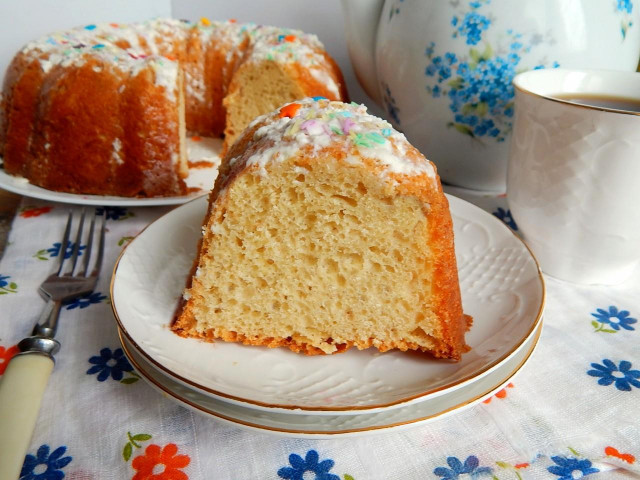Composition / ingredients
Step-by-step cooking
Step 1:
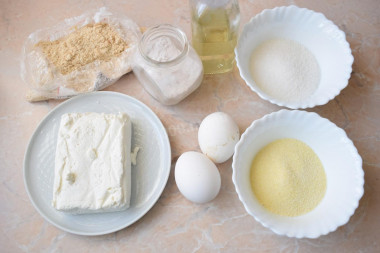
How to make a children's cottage cheese casserole with semolina? Prepare the ingredients. I usually use cottage cheese moist and homogeneous. If you have coarse-grained cottage cheese, it is advisable to rub it through a sieve or punch it with a blender. The more homogeneous the cottage cheese is, the more tender the finished casserole will be. Eggs for casserole can be used in any size. If they are very small, then you can add another one. You can adjust the amount of sugar to your liking.
Step 2:
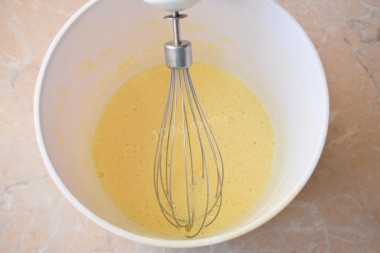
Prepare a high bowl for making cottage cheese dough. Combine the eggs with sugar in it and beat a little so that the sugar begins to dissolve.
Step 3:
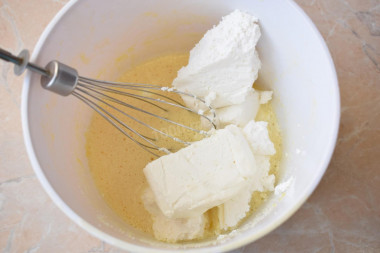
Then add the prepared cottage cheese to the bowl and mix it into the egg mixture.
Step 4:
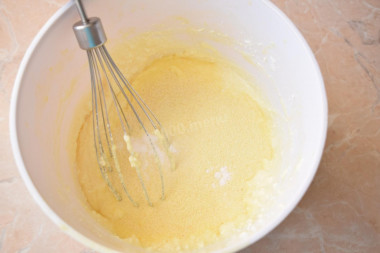
Then add semolina, vanilla and soda. Mix everything well so that all the ingredients mix evenly with each other. If the dough seems liquid to you and you want to add semolina, you should not do this. During the baking process, the semolina will swell very well.
Step 5:
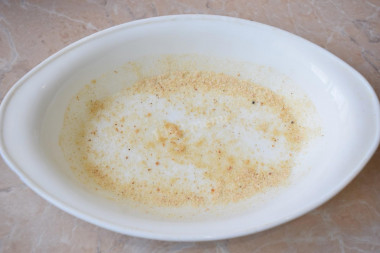
Prepare the baking dish. Lubricate the bottom and walls of the mold with a small amount of vegetable oil and sprinkle a little breadcrumbs. Why sprinkle with breadcrumbs? This is necessary so that the finished casserole can be easily removed from the mold.
Step 6:
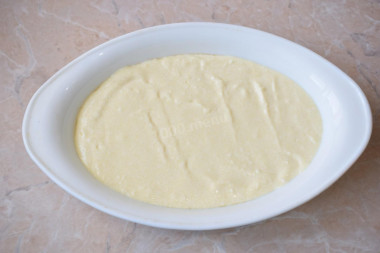
Put the finished curd dough into the prepared mold and distribute it evenly. Place the casserole dish in the oven, preheated to 180 degrees, for 30-40 minutes. Be guided by your oven.
Step 7:
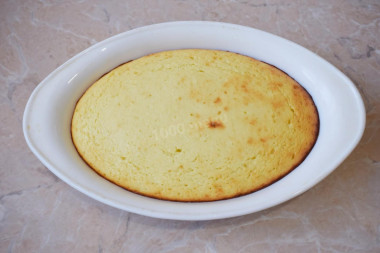
The finished casserole will become an appetizing, golden color. Cut the casserole into pieces and arrange in prepared plates.
Step 8:
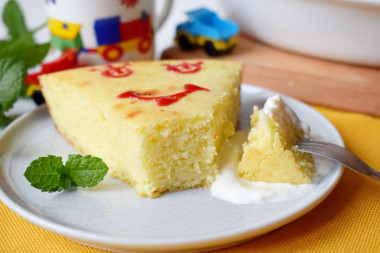
Add sour cream, jam or condensed milk to the casserole. Have a nice treat for you and your kids!
Children, for the most part, are very fond of cottage cheese casseroles. To make them more varied in taste, you can add raisins, nuts, berries or fruits.
This casserole is not only very tasty, but also very useful, thanks to the high content of cottage cheese.
Be sure to wash the eggs before use, as even the seemingly clean shell may contain harmful bacteria. It is best to use food detergents and a brush.
Keep in mind that everyone's ovens are different. The temperature and cooking time may differ from those specified in the recipe. To make any baked dish successful, use useful information about the features of ovens !
Is it possible to replace baking powder with soda, how to add them correctly so that the baking is lush, how to avoid an unpleasant soda taste and much more, read the article "Baking powder or baking soda - which is better?"
Calorie content of products possible in the dish
- Chicken egg - 157 kcal/100g
- Egg white - 45 kcal/100g
- Egg powder - 542 kcal/100g
- Egg yolk - 352 kcal/100g
- Ostrich egg - 118 kcal/100g
- Semolina - 340 kcal/100g
- Cottage cheese of 40% fat content - 466 kcal/100g
- Cottage cheese of 20% fat content - 233 kcal/100g
- Cottage cheese of 18% fat content - 226 kcal/100g
- Cottage cheese of 10% fat content - 156 kcal/100g
- Low-fat cottage cheese - 75 kcal/100g
- Cottage cheese with sour cream - 260 kcal/100g
- Fruit cottage cheese - 147 kcal/100g
- Soft dietary cottage cheese - 170 kcal/100g
- Vitalinia cottage cheese - 64 kcal/100g
- Cottage cheese "morning" ( "danone") without sugar - 91 kcal/100g
- Cottage cheese - 156 kcal/100g
- Granulated sugar - 398 kcal/100g
- Sugar - 398 kcal/100g
- Vegetable oil - 873 kcal/100g
- Vanillin - 288 kcal/100g
- Baking soda - 0 kcal/100g
- Breadcrumbs - 347 kcal/100g

